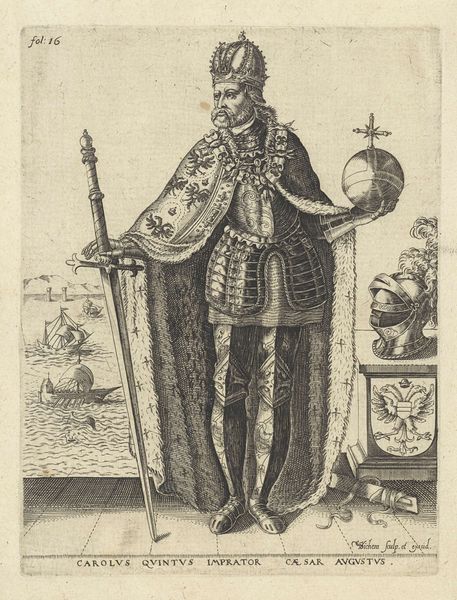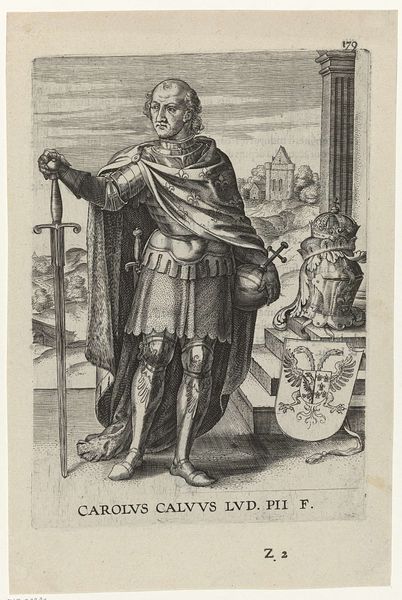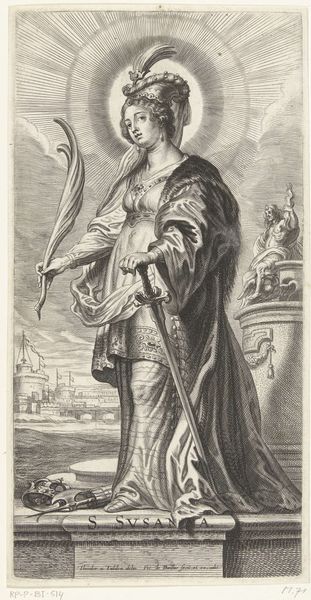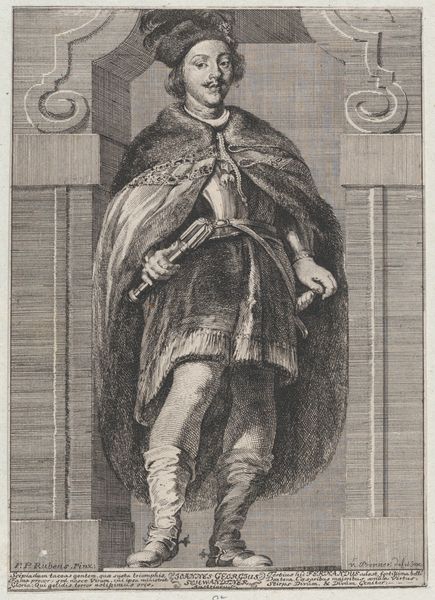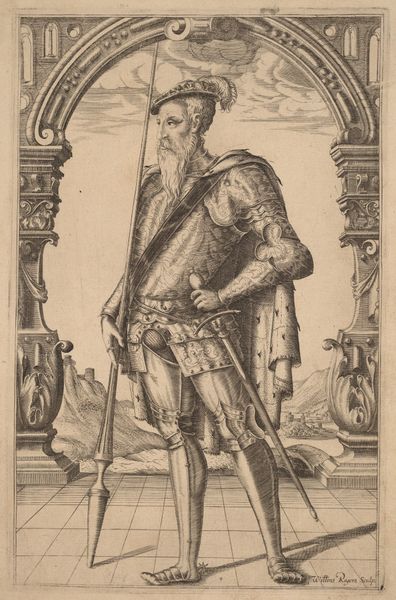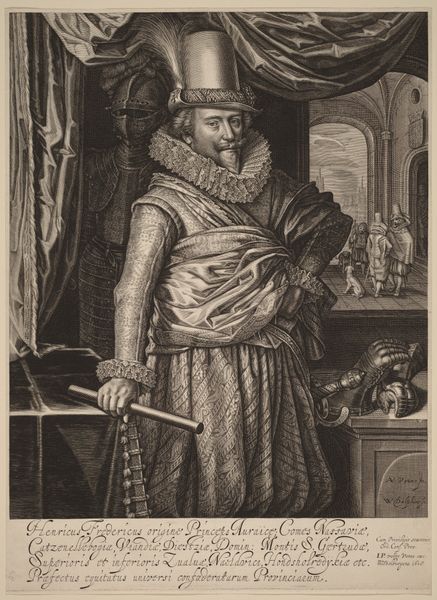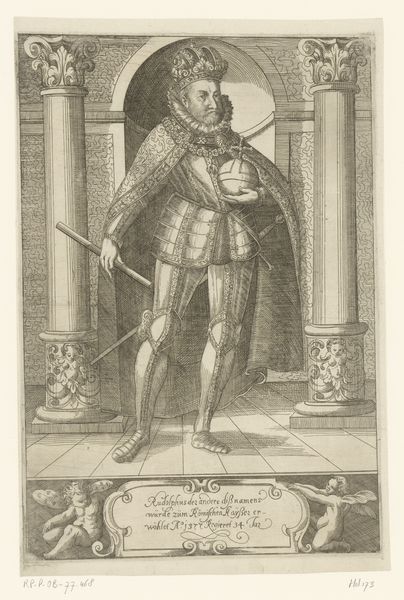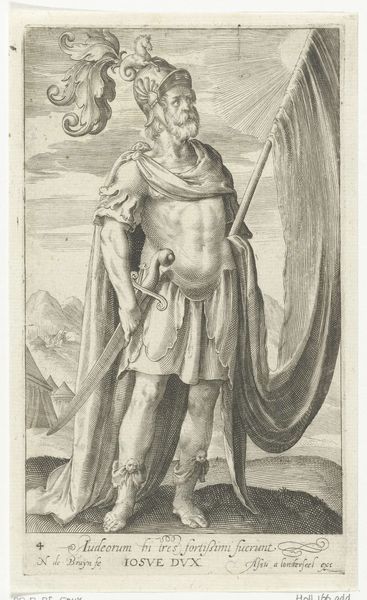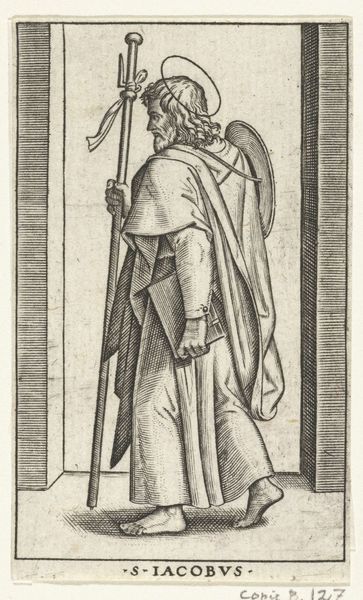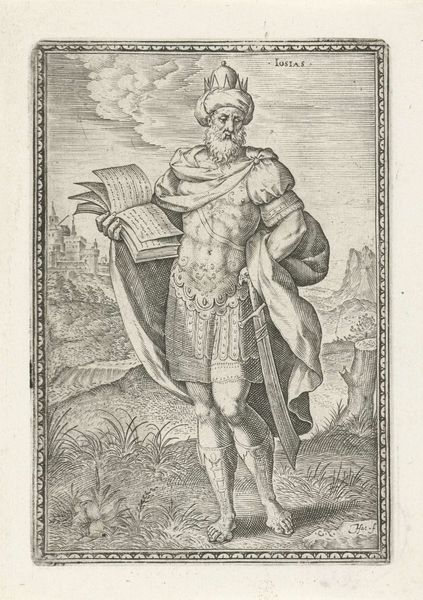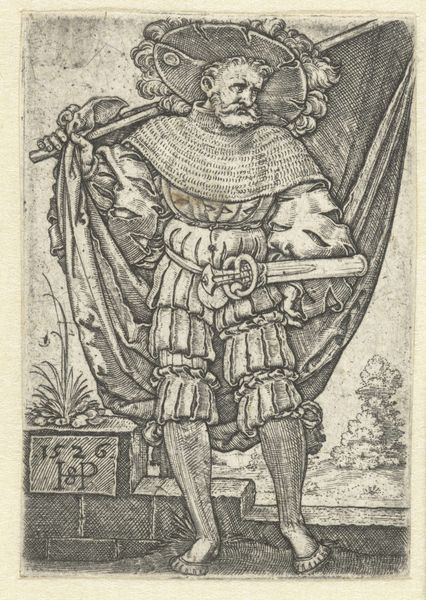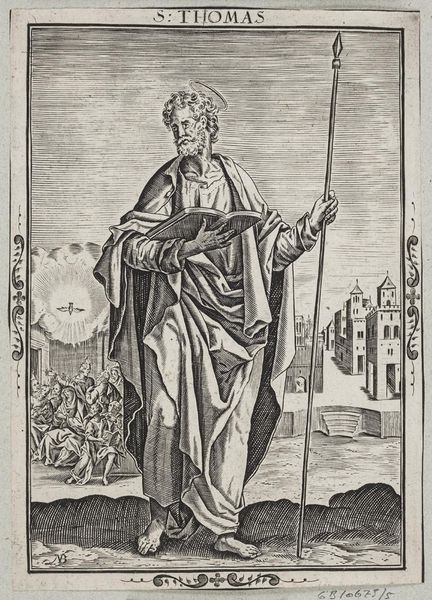
print, engraving
#
portrait
#
baroque
# print
#
old engraving style
#
history-painting
#
northern-renaissance
#
engraving
Dimensions: height 190 mm, width 143 mm
Copyright: Rijks Museum: Open Domain
Editor: This is "Portret van Filips de Goede," or "Portrait of Philip the Good," by Simon van de Passe, made sometime between 1605 and 1647. It's a print, an engraving, held here at the Rijksmuseum. There's a stately seriousness to the image. What do you see in it? Curator: Ah, Philip the Good, or Philip the kind of alright, depending on which side of history you're on, right? I find these Northern Renaissance prints fascinating because they tried to do so much, yet you have the constraint of line, of essentially, cross-hatching. Look at how van de Passe created depth, both literal depth into the background, and depth of character! Do you see the little landscape behind him? Almost like a stage set, yet Philip occupies a definite foreground. What does that division suggest to you? Editor: I guess he’s presented almost like a performer. Very staged. He looks very aware of being watched. Curator: Exactly. There’s a *performance* of power here, but that very awareness perhaps reveals vulnerability too. See his grip on that scroll – almost hesitant? And the column… classical, powerful. But could it also represent a cage, of sorts? Consider also how the technique renders everything in sharp relief, highlighting detail but maybe at the expense of some nuance? What do you think? Editor: I never thought of it that way, but seeing him hemmed in actually gives the image a sense of the temporality. I always considered printmaking very technical, so the performance side hadn’t crossed my mind before. Curator: Exactly. It's easy to miss those subtle notes of drama within a format that, yes, emphasizes skill. Wonderful! Thanks for that fresh view.
Comments
No comments
Be the first to comment and join the conversation on the ultimate creative platform.
